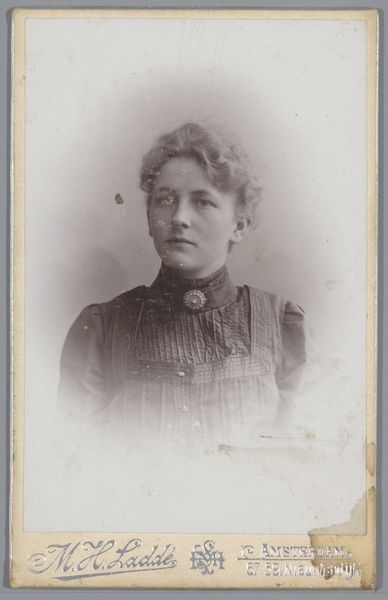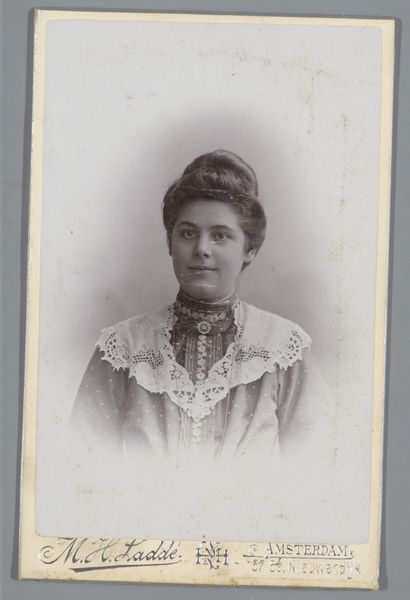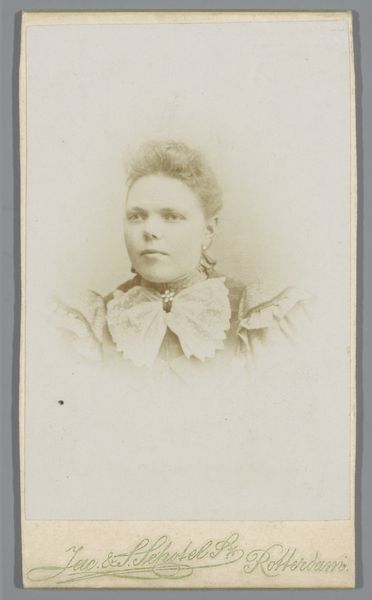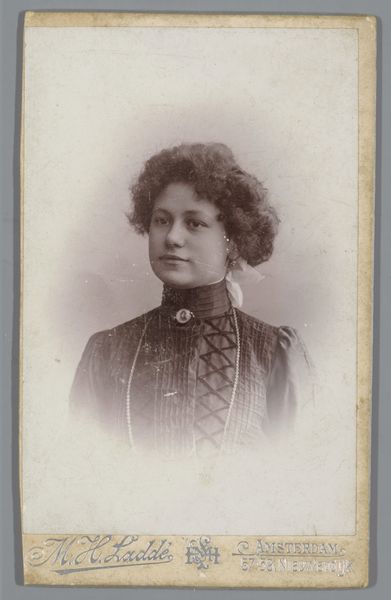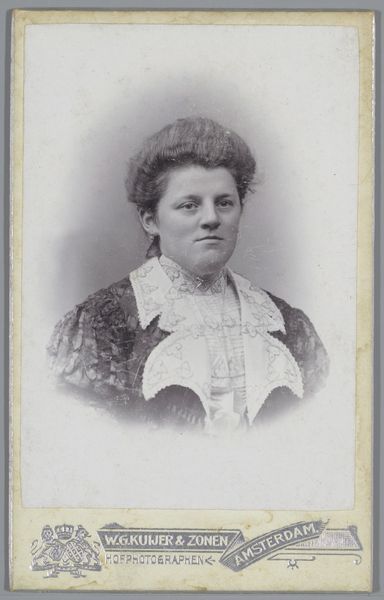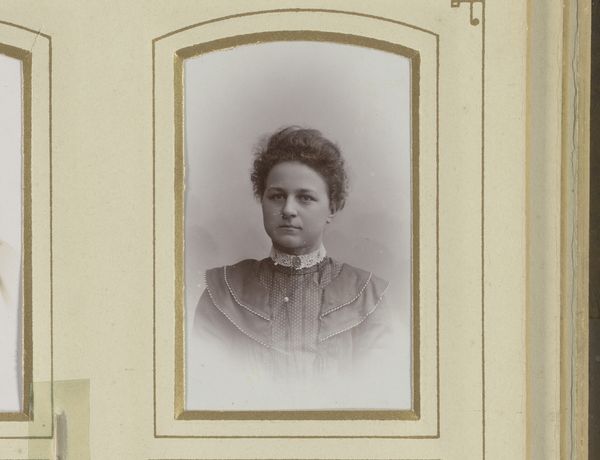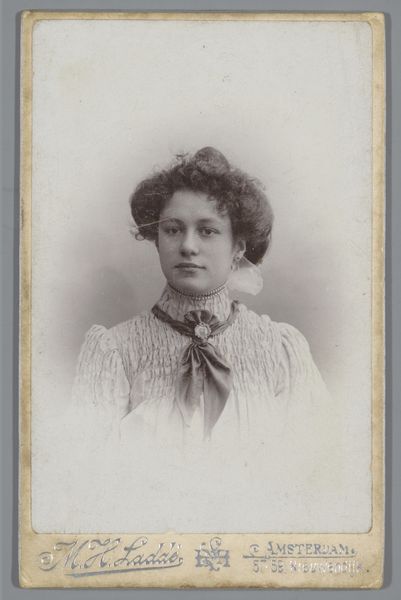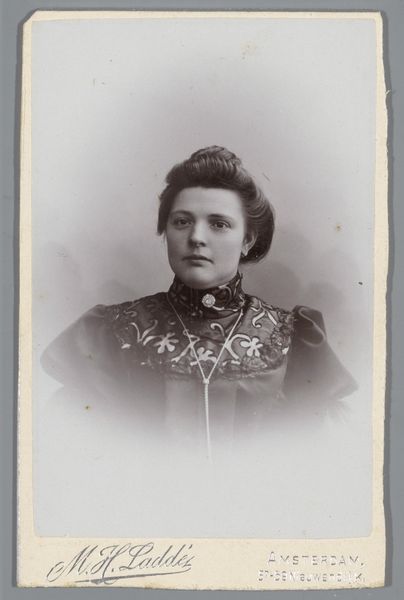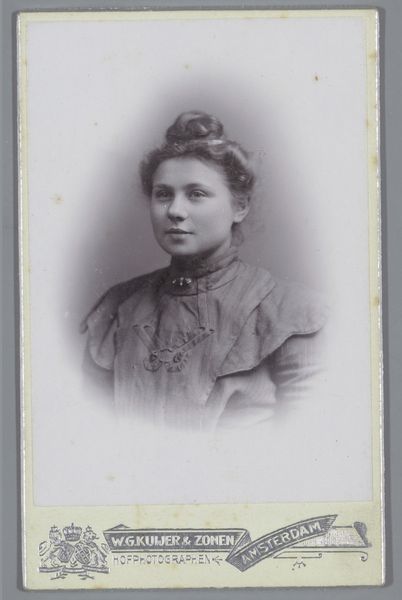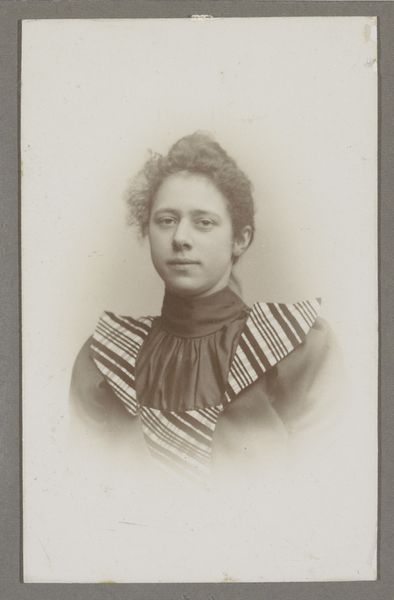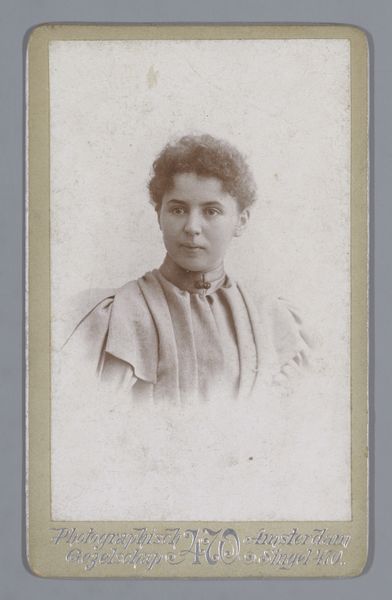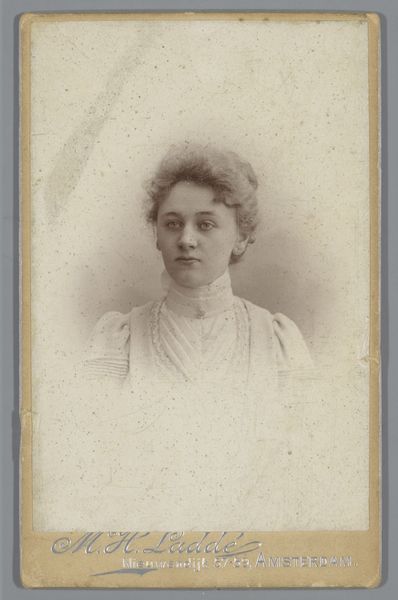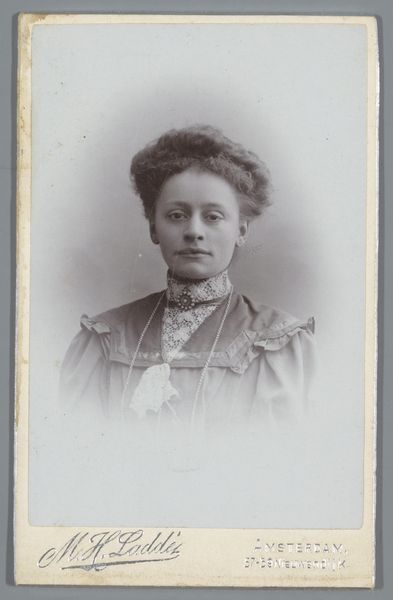
Portret van een onbekende vrouw, aangeduid als de dochter van Jan Ton 1892 - 1906
0:00
0:00
photography, gelatin-silver-print
#
portrait
#
photography
#
gelatin-silver-print
Dimensions: length 105 mm, width 66 mm
Copyright: Rijks Museum: Open Domain
Editor: This gelatin silver print, "Portret van een onbekende vrouw, aangeduid als de dochter van Jan Ton", was taken sometime between 1892 and 1906 by Machiel Hendricus Laddé. There's such a stillness to this image. It’s so formally composed. What catches your eye about it? Curator: I think it is worth looking at how the photographic studio shaped this presentation. Laddé's Amsterdam studio likely catered to a particular social stratum. These photographic portraits gained popularity amongst the burgeoning middle class who wanted to emulate the styles and customs of the elite. What does this image say about representation and access? Editor: That’s fascinating. So it was almost a democratization of portraiture? It was a way for people to participate in a visual culture that had previously been restricted. Curator: Exactly. Think about how the sitter is positioned – direct gaze, controlled posture, specific garments. She presents herself in a way that signified respectability and status within a specific social framework. How does this image compare to other photographs of the era in terms of posing and presentation? Editor: Well, in my limited experience, I see a bit of stiffness in most portraits of the era. Perhaps people weren't used to being photographed and weren’t yet comfortable in front of the camera? I like knowing it provided them access to cultural capital they would not otherwise have had. Curator: Indeed! Photography's proliferation radically altered how people perceived themselves and others. Thank you for making that interesting observation. Editor: It’s been incredibly helpful to hear your historical perspective! This makes me wonder what other historical shifts were taking place and how those social currents impacted artistic output!
Comments
No comments
Be the first to comment and join the conversation on the ultimate creative platform.
